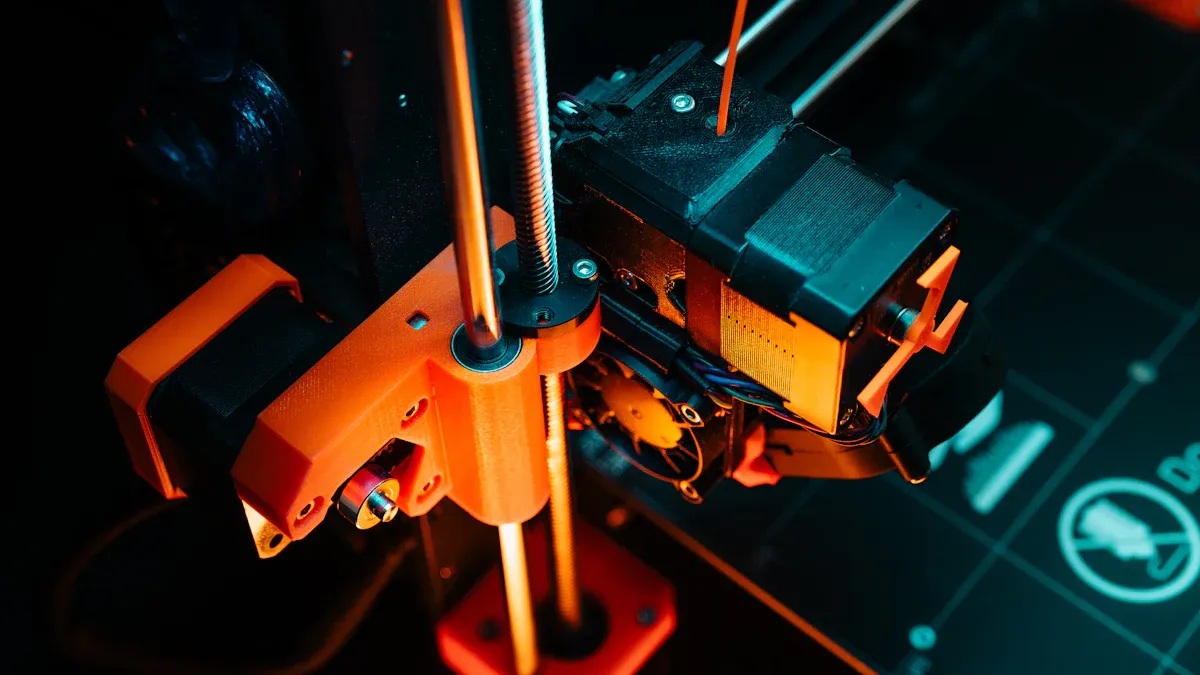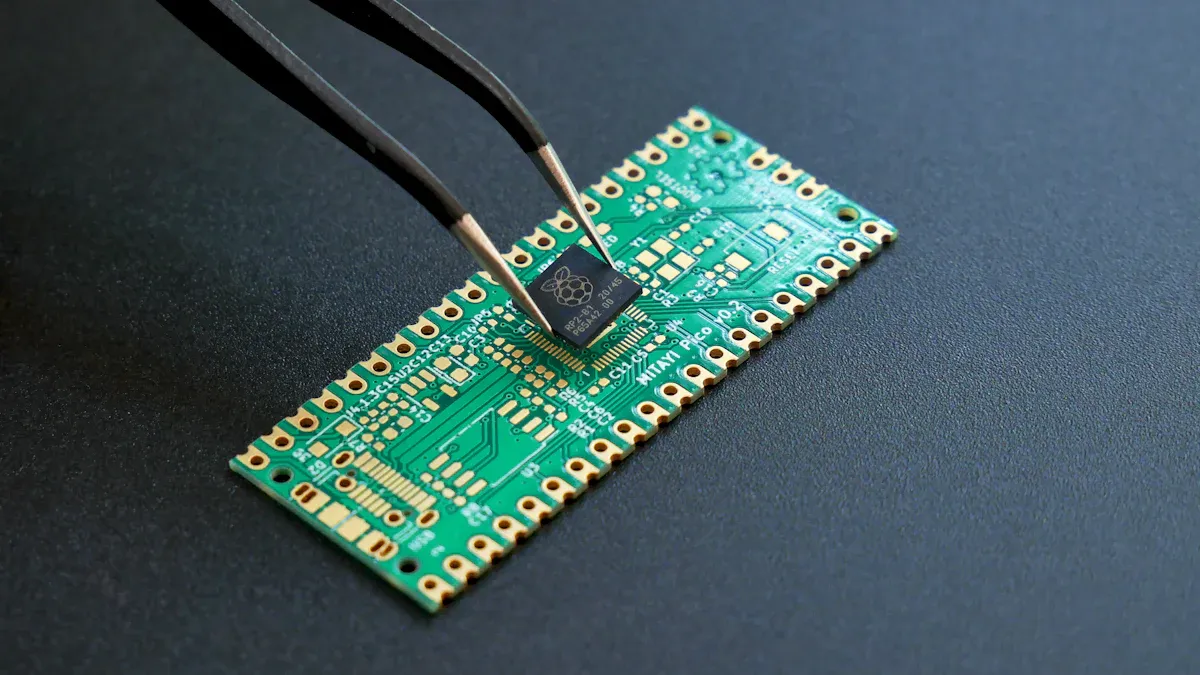
EPI SUSCEPTORs are essential in epitaxial growth, the process of depositing a thin crystalline layer onto a substrate. An EPI SUSCEPTOR ensures uniform heat distribution throughout this process, which enhances precision, improves material quality, minimizes defects, and boosts production efficiency. Consequently, this leads to higher yields in manufacturing.
Key Takeaways
- EPI susceptors spread heat evenly during material growth, making better materials with fewer flaws.
- Picking the right EPI susceptor with good coatings helps make production faster and cheaper.
- EPI susceptors help LEDs and power devices work better by creating a steady space for perfect layer building.
Understanding EPI Susceptors
What Are EPI Susceptors?
An EPI SUSCEPTOR is a critical component in the epitaxial growth process. It acts as a support structure for the substrate during the deposition of thin crystalline layers. You can think of it as a platform that ensures the substrate remains stable and evenly heated throughout the process. This stability is essential for achieving high-quality material growth.
EPI susceptors are designed to handle extreme temperatures and maintain uniform thermal distribution. This uniformity helps prevent uneven growth, which can lead to defects in the final product. By ensuring consistent conditions, they play a key role in improving the efficiency and yield of manufacturing processes.
Tip: When selecting an EPI SUSCEPTOR, consider its thermal properties and compatibility with your specific manufacturing needs.
Material Composition and Coatings
The materials used to make EPI susceptors are carefully chosen to withstand the harsh conditions of epitaxial growth. Most susceptors are made from materials like graphite or silicon carbide. These materials are known for their high thermal conductivity and durability.
To enhance their performance, EPI susceptors often feature specialized coatings. For example, silicon carbide coatings can improve resistance to chemical reactions and extend the lifespan of the susceptor. These coatings also help maintain a clean surface, which is crucial for producing defect-free layers.
Different coatings may be used depending on the application. For instance, in LED production, coatings that minimize contamination are preferred. In power device manufacturing, coatings that enhance thermal stability are more important.
How EPI Susceptors Improve Yield in Manufacturing

Enhanced Thermal Uniformity
Thermal uniformity is essential for epitaxial growth. Uneven heating can lead to inconsistent layer deposition, which affects the quality of the final product. EPI susceptors help you achieve uniform heat distribution across the substrate. Their design ensures that every part of the substrate receives the same amount of heat during the process. This consistency minimizes the risk of defects caused by temperature variations.
You can think of EPI susceptors as the foundation for precise thermal control. By maintaining stable temperatures, they enable you to produce high-quality crystalline layers. This improvement directly impacts manufacturing yield, as fewer defective products mean higher output.
Note: If you’re facing issues with uneven growth in your production, upgrading to high-performance EPI susceptors can significantly enhance thermal uniformity.
Improved Material Quality and Defect Reduction
Material quality is a critical factor in LED and power device production. Defects such as dislocations or impurities can compromise the performance of these devices. EPI susceptors play a vital role in reducing such defects. Their ability to provide a stable and clean environment during epitaxial growth ensures that the deposited layers are free from contamination.
The specialized coatings on EPI susceptors further enhance material quality. For example, silicon carbide coatings resist chemical reactions and prevent impurities from affecting the substrate. This clean surface allows you to achieve defect-free layers, which are essential for high-performance devices.
When you use EPI susceptors designed for your specific application, you can significantly reduce the occurrence of defects. This improvement not only boosts yield but also enhances the reliability of the final products.
Process Efficiency and Throughput
Efficiency is key in manufacturing. EPI susceptors contribute to faster and more reliable epitaxial growth processes. Their thermal properties allow you to maintain optimal conditions for layer deposition, reducing the time required for each cycle. This efficiency translates into higher throughput, enabling you to produce more devices in less time.
Additionally, the durability of EPI susceptors minimizes downtime caused by maintenance or replacement. Their robust design ensures consistent performance over extended periods, allowing you to focus on maximizing production. By integrating high-quality EPI susceptors into your manufacturing setup, you can streamline operations and achieve greater efficiency.
Tip: To optimize throughput, choose EPI susceptors with coatings that match your production requirements. This ensures long-lasting performance and reduces the need for frequent replacements.
Applications of EPI Susceptors in LED and Power Devices

Advancing LED Production
EPI susceptors play a pivotal role in the production of LEDs. LEDs require precise epitaxial growth to achieve the desired optical and electrical properties. You need a manufacturing process that ensures uniformity and minimizes defects. This is where EPI susceptors excel. They provide the thermal stability and cleanliness necessary for producing high-quality LED wafers.
One of the key benefits of using EPI susceptors in LED production is their ability to enhance light output efficiency. By ensuring defect-free crystalline layers, they help you create LEDs with better brightness and longer lifespans. This improvement directly impacts the performance of LEDs in applications like displays, lighting, and automotive systems.
Tip: To maximize LED efficiency, choose EPI susceptors with coatings that minimize contamination during the growth process.
EPI susceptors also contribute to cost savings in LED manufacturing. Their durability reduces the need for frequent replacements, which lowers operational costs. Additionally, their ability to improve yield means you can produce more functional LEDs from the same batch of materials. This efficiency is crucial in meeting the growing demand for LEDs in various industries.
Enhancing Power Device Performance
Power devices, such as transistors and diodes, rely on high-quality materials to handle high voltages and currents. EPI susceptors enable you to achieve the material quality required for these demanding applications. Their ability to maintain uniform thermal conditions ensures consistent epitaxial growth, which is essential for producing reliable power devices.
The use of EPI susceptors in power device manufacturing also helps you reduce defects like dislocations and impurities. These defects can compromise the performance and lifespan of power devices. By providing a stable and clean environment, EPI susceptors allow you to produce devices with superior electrical properties.
Another advantage of EPI susceptors is their role in improving thermal management. Power devices generate significant heat during operation. EPI susceptors with advanced coatings can enhance the thermal conductivity of the substrate, helping you create devices that dissipate heat more effectively. This improvement leads to better performance and reliability in applications like electric vehicles, renewable energy systems, and industrial equipment.
Note: For power device production, select EPI susceptors with coatings designed to withstand high temperatures and chemical exposure.
Incorporating EPI susceptors into your manufacturing process can also boost throughput. Their robust design minimizes downtime, allowing you to produce more devices in less time. This efficiency is vital for staying competitive in the fast-paced semiconductor industry.
EPI susceptors improve yield by enhancing material quality and streamlining production. Their role in LED and power device manufacturing ensures better performance and reliability. As semiconductor technology evolves, you can expect EPI susceptors to drive innovation, enabling more efficient, high-quality devices for future applications in energy, electronics, and beyond.
FAQ
What factors should you consider when choosing an EPI susceptor?
You should evaluate thermal properties, material compatibility, and coating type. These factors ensure optimal performance and align with your manufacturing requirements.
Tip: Consult your equipment specifications to select the most suitable susceptor.
How do EPI susceptors reduce manufacturing defects?
EPI susceptors provide uniform heating and a clean environment. This minimizes impurities and ensures consistent layer deposition, reducing defects in the final product.
Can EPI susceptors improve production speed?
Yes, they enhance thermal efficiency and reduce cycle times. This allows you to produce more devices in less time, increasing overall throughput.
Note: High-quality susceptors also reduce downtime caused by maintenance or replacements.


